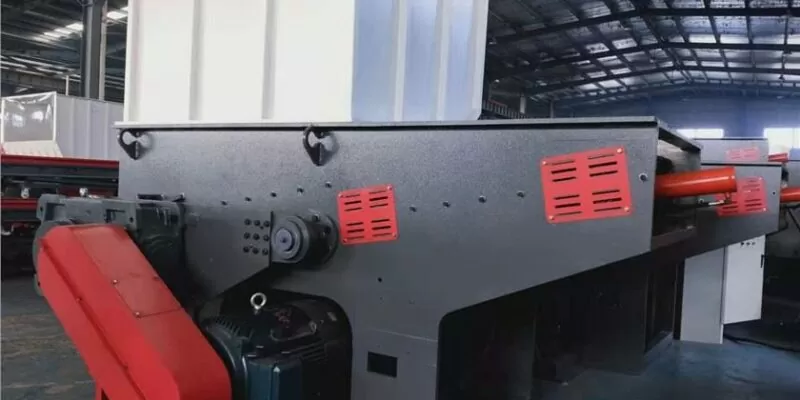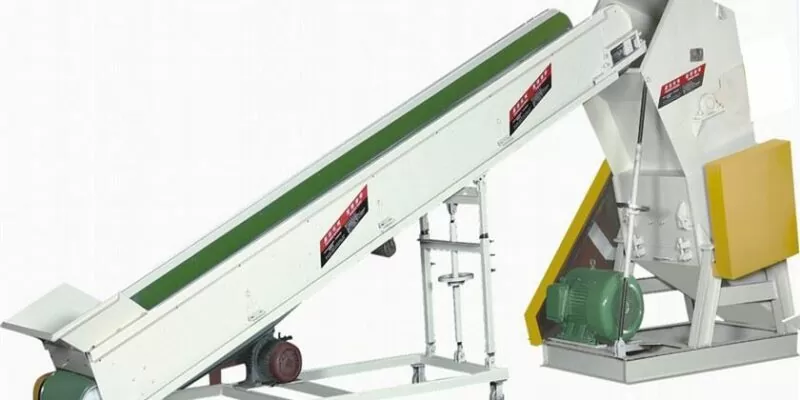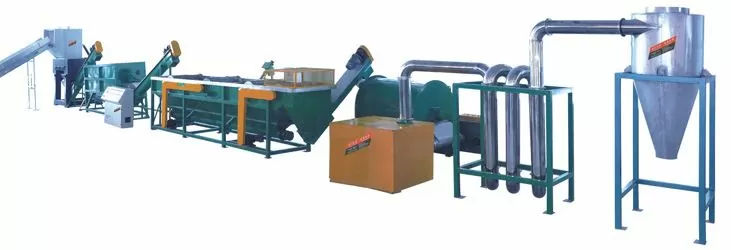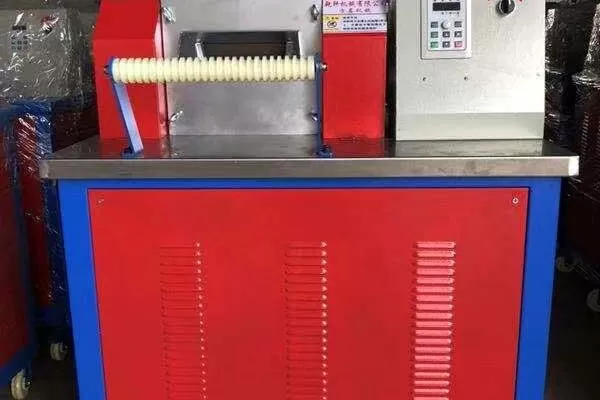I’ve often faced the headache of imprecise plastic cuts in my early days at Amige. It felt like every project was marred by uneven edges and wasted material. I struggled to find a solution that promised both precision and speed. Then, I discovered a spectrum of plastic cutting machines. These machines not only solved my problems but also revolutionized our production process. Their innovation and efficiency sparked my journey towards becoming an industry expert.
I realized that understanding the various plastic cutting machines was the key to unlocking quality and efficiency. I dove into the world of laser, waterjet, CNC, and mechanical cutters. Each machine boasts unique features suited for different applications. I want to share my insights as the CEO of Amige, so you can choose the perfect machine for your needs. With a mix of technical expertise and a pinch of wit, I will guide you through the maze of options available today.
Curiosity drove me to explore every type in detail. I promised myself that no stone would be left unturned. I’m here to share every secret with you.

What are Plastic Cutting Machines?
Plastic cutting machines are the backbone of modern fabrication. I’ve seen these devices transform raw plastic sheets into intricate components. They are engineered for precision. Their performance is unmatched in producing high-quality parts. These machines work under varying conditions and materials. I often refer to their performance metrics from reliable data. Every device has its unique application, and I’m excited to break them down for you.
The world of plastic cutting machines is vast. There’s a machine for almost every type of plastic. Whether you’re cutting acrylic, polycarbonate, or PVC, there is a dedicated tool. I’ve experimented with several types over the years. Trust me, the right machine can save both time and resources. Our production line at Amige owes its efficiency to these marvels.
What Types of Plastic Cutting Machines Are There?
I have encountered several types of plastic cutting machines. Each offers its unique set of benefits and challenges. Let’s talk about the main players in this arena.
Laser Cutting Machines:
These machines use high-powered lasers. They melt or vaporize material. Their precision is phenomenal. I love how they deliver intricate designs effortlessly.
Waterjet Cutting Machines:
They harness the force of high-pressure water. Mixed with abrasive particles, waterjets slice through plastic. I appreciate them for their clean edges and minimal heat distortion.
CNC (Computer Numerical Control) Routers:
These routers are versatile. They use computer programming to guide the cutting head. The result is a highly accurate cut with minimal waste. I often recommend these for complex designs.
Mechanical Cutting Machines:
These are traditional yet effective. They use physical blades or punches. Though they may lack the finesse of lasers, they are robust and reliable. I sometimes rely on them for heavy-duty tasks.
Every machine has its place. The choice depends on the project requirements and budget.

How Does Laser Cutting Work?
Laser cutting is one of my favorite technologies. It uses a concentrated beam of light to cut through plastic. I love its accuracy and speed. The process involves a focused laser beam. This beam melts, burns, or vaporizes the material. The result is a smooth, precise edge. I always emphasize its reliability when discussing our production line. More technical details are available at laser mechanism.
I’ve seen laser cutters in action. They deliver stunning results with minimal waste. Their digital controls ensure consistent output every time. The reduced manual intervention is a significant advantage. I can focus on design innovation rather than constant monitoring. It’s a perfect blend of art and science.
How Does Waterjet Cutting Work?
Waterjet cutting is a marvel in itself. I was initially skeptical about using water for precision cutting. However, it proved to be an exceptional alternative. High-pressure water, often combined with abrasives, cuts through plastic with ease. The process is cold, meaning it doesn’t alter the material’s structure. I find this especially useful for heat-sensitive plastics. More technical data is available at waterjet mechanism.
The precision and versatility of waterjet cutters are impressive. I appreciate their ability to create complex shapes without heat distortion. They offer clean cuts, making them ideal for detailed work. Their adaptability to various materials sets them apart. Every cut is a testament to the blend of technology and innovation.
What Are the Advantages and Disadvantages of Each Machine?
Every cutting machine comes with pros and cons. I always weigh these factors when choosing a tool for a project.
Laser Cutting Advantages:
Precision and Speed:
Laser cutters offer unmatched precision. They work rapidly with minimal error. Their digital controls are state-of-the-art.
Minimal Material Deformation:
The heat is concentrated. This prevents excessive warping or cracking.
Laser Cutting Disadvantages:
Heat Affected Zone (HAZ):
Excessive heat can cause slight material distortion.
Cost:
The initial investment is relatively high.
Waterjet Cutting Advantages:
Cold Cutting Process:
No heat means no thermal distortion.

Versatility:
Waterjets can cut various materials with ease. More benefits at waterjet advantages.
Waterjet Cutting Disadvantages:
Slower Cutting Speeds:
Compared to lasers, waterjets are slower.
Operational Complexity:
They require precise calibration and regular maintenance.
CNC Routers Advantages:
Flexibility:
They can handle complex designs.
Cost-Effectiveness:
CNC machines are generally affordable and reliable. Find more at CNC advantages.
CNC Routers Disadvantages:
Limited Material Thickness:
They may struggle with very thick plastics.
Potential for Mechanical Wear:
Over time, moving parts may require replacement.
Mechanical Cutting Machines Advantages:
Simplicity:
They are easy to operate and maintain.
Cost-Effective for Bulk Cutting:
Ideal for repetitive tasks on a budget. More details at mechanical advantages.
Mechanical Cutting Machines Disadvantages:
Lack of Precision:
They might not deliver the finesse required for intricate designs.
Higher Risk of Material Damage:
Physical blades may cause cracks or uneven edges.
I always consider these points based on my projects at Amige. Each machine has its niche. The right choice depends on your specific requirements.
What Should You Consider When Choosing a Machine?
Choosing the right plastic cutting machine isn’t a one-size-fits-all decision. I recommend evaluating several factors before making a decision.
Material Type and Thickness:
I always start by asking: What type of plastic are you using?
Acrylic, Polycarbonate, or PVC?
Each has unique properties.
Thickness Matters:
Thicker materials may require more robust machines.
Check out material data for detailed comparisons.
Precision Requirements:
How precise does your cut need to be?
Intricate Designs:
Laser cutting is often the best.
Bulk Cutting:
Mechanical or CNC routers might be more cost-effective.
Read more on precision at precision cutting data.
Production Volume:
High volume projects may require machines with higher throughput.
I always ask, “Can the machine keep up with my demand?”
High-Speed Operations:
Laser and CNC machines typically deliver.
Cost vs. Output:
Weigh your budget against the production rate.
More insights can be found at production data.
Maintenance and Operational Costs:
Every machine has its maintenance requirements.
I’ve learned that ongoing costs can add up.
Ease of Maintenance:
Consider machines that are easy to service.
Availability of Parts:
Make sure parts are readily available.
For further details, see maintenance data.
Safety Considerations:
Safety is paramount in my operations.
Laser Safety:
Requires protective gear and controlled environments.
Waterjet Safety:
Involves managing high-pressure systems.
Refer to safety data for best practices.
Each factor plays a critical role. I’ve combined my experience and data insights to help you decide. The decision should align with both your production needs and budget.
How Do These Machines Impact Production Efficiency?
I’ve witnessed firsthand how the right machine can transform a business. Efficient cutting directly influences production speed and quality.
Speed and Accuracy:
Precision cutting machines like lasers and CNC routers cut down production time.
They minimize errors. This leads to a smoother workflow.
I often see a reduction in post-processing work.
Waste Reduction:
Efficient machines reduce scrap rates.
This means lower costs and less environmental impact.
At Amige, we track our waste data using metrics from waste reduction data.
Flexibility and Innovation:
Advanced machines allow for rapid prototyping.
They empower designers to experiment with complex shapes.
Innovation is the cornerstone of our company culture.
I encourage exploring various cutting techniques for better outcomes.
Every improvement in production efficiency translates into increased profitability. I always highlight this when discussing machine upgrades with my team.
What Are the Latest Trends in Plastic Cutting Technology?
Staying ahead means keeping an eye on emerging trends. I’m constantly on the lookout for innovations that push the envelope in plastic cutting.
Integration with Automation:
Modern machines are increasingly automated.
They integrate with software for seamless production.
I have seen impressive gains in speed and accuracy.
Automation reduces human error. This has been a game-changer for us.
For more insights, visit automation trends.
Enhanced Safety Features:
New machines come with built-in safety measures.
They reduce operator risks and ensure compliance.
I appreciate innovations that keep my team safe.
Safety enhancements are crucial for long-term operational stability.
Detailed statistics are available at safety trends.

Energy Efficiency:
Energy-efficient models are making waves.
They cut down on operational costs.
I am particularly proud of the green initiatives we adopt.
Sustainable operations are not just cost-effective but also responsible.
Check out energy efficiency for more details.
Smart Connectivity:
Connectivity in modern cutting machines is evolving.
They now offer remote monitoring and control.
This real-time data helps in predictive maintenance.
I find it amazing how technology empowers us to optimize production from anywhere.
More on this can be found at smart connectivity.
Each trend signals a move towards smarter, safer, and more efficient cutting processes. I remain excited about these developments.
How Can You Maximize Your Investment in Plastic Cutting Machines?
Investing in a plastic cutting machine is a big decision. I always advise a careful cost-benefit analysis. Here are some steps I follow to ensure maximum return on investment (ROI).
Comprehensive Research:
Do your homework.
I spend time researching every machine’s performance metrics.
Read industry reports and user reviews.
I often rely on industry data to guide my decisions.
Pilot Testing:
Before a full-scale investment, pilot testing is crucial.
I’ve seen the difference between theoretical performance and real-world application.
A test run helps iron out any operational kinks.
It’s a risk-free way to assess machine suitability.
More on pilot testing can be found at pilot testing data.
Training and Support:
Invest in quality training for your team.
I ensure that my operators are well-versed in machine operations.
Skilled personnel maximize machine capabilities and minimize downtime.
Support from the manufacturer is also critical.
For more on training best practices, refer to training data.
Regular Maintenance:
A well-maintained machine lasts longer.
I schedule regular maintenance to avoid unexpected breakdowns.
This proactive approach saves both time and money.
Maintenance schedules can be optimized with data from maintenance best practices.
Each strategy helps secure a robust ROI. I firmly believe that informed investments lead to sustainable growth.
What Does the Future Hold for Plastic Cutting Machines?
Innovation never stops. I constantly ponder the future of plastic cutting.
Emerging technologies promise even greater precision.
I foresee advancements in AI-driven quality control.
Imagine machines that self-optimize during production!
The integration of machine learning is set to revolutionize our industry.
I keep an eye on developments reported at future trends.
Sustainability is also a big factor.
Future machines will be more energy-efficient and eco-friendly.
They will reduce waste and lower environmental impact.
I am excited about the possibilities and challenges ahead.
The evolution of cutting machines is something I am proud to be part of.
Conclusion
I hope you now have a clear view of the different plastic cutting machines.
From lasers to waterjets, each offers unique benefits.
Choose wisely to boost efficiency and quality.
Let innovation guide your journey!
